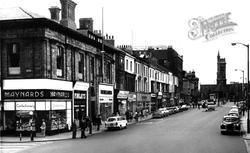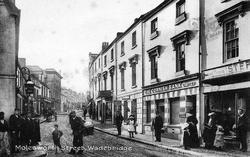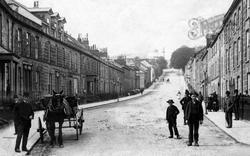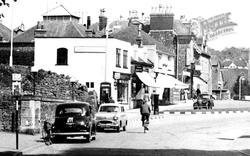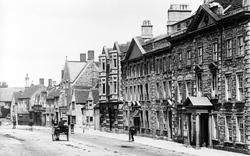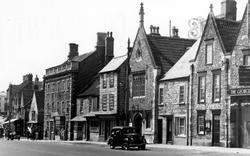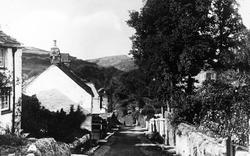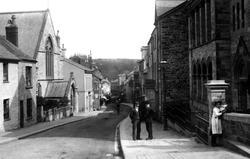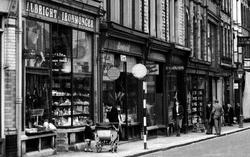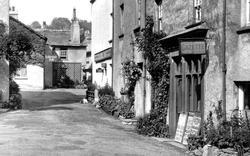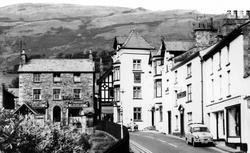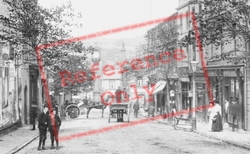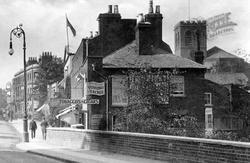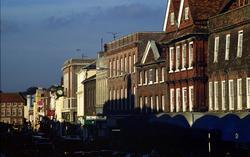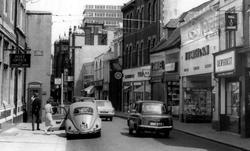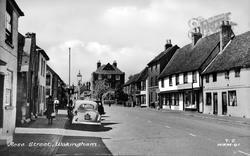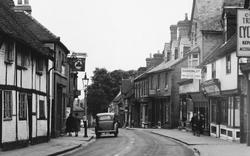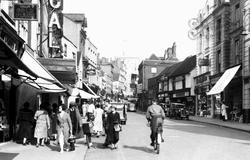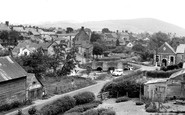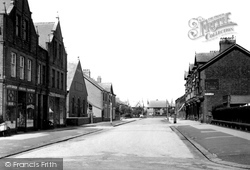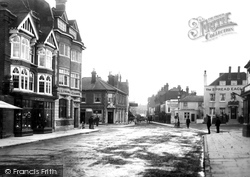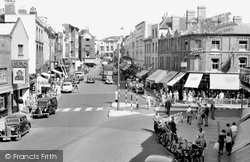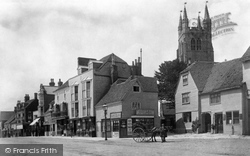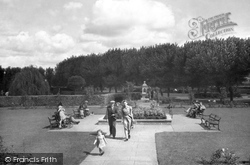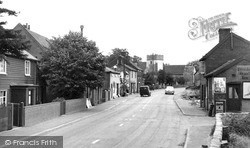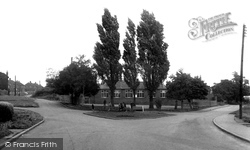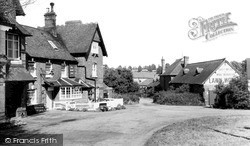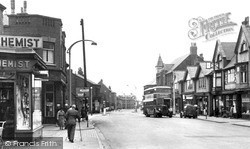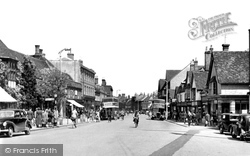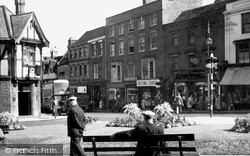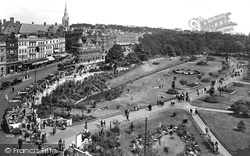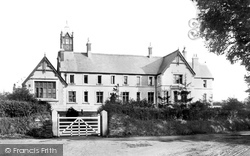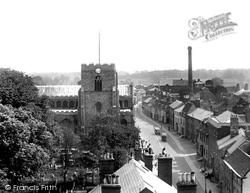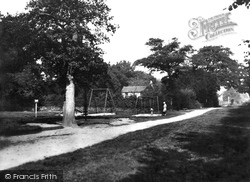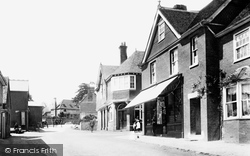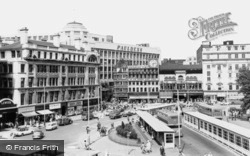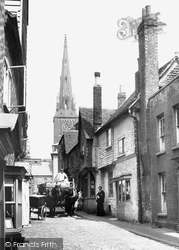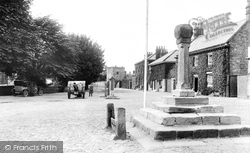Places
36 places found.
Did you mean: street or streetly ?
Those places high-lighted have photos. All locations may have maps, books and memories.
- Heathfield, Sussex (near Cade Street)
- Street, Somerset
- Chester-Le-Street, Durham
- Adwick Le Street, Yorkshire
- Scotch Street, County Armagh
- Friday Street, Surrey
- Potter Street, Essex
- Boughton Street, Kent
- Newgate Street, Hertfordshire
- Streetly, West Midlands
- Shalmsford Street, Kent
- Green Street Green, Greater London
- Boreham Street, Sussex
- Park Street, Hertfordshire
- Cade Street, Sussex
- Appleton-le-Street, Yorkshire
- Hare Street, Hertfordshire (near Buntingford)
- Romney Street, Kent
- Trimley Lower Street, Suffolk
- Streetly End, Cambridgeshire
- Hare Street, Hertfordshire (near Stevenage)
- Brandish Street, Somerset
- Colney Street, Hertfordshire
- Langley Street, Norfolk
- Silver Street, Somerset (near Street)
- Street, Yorkshire (near Glaisdale)
- Street, Lancashire
- Street, Devon
- Street, Cumbria (near Orton)
- Street, Somerset (near Chard)
- Bird Street, Suffolk
- Black Street, Suffolk
- Ash Street, Suffolk
- Broad Street, Wiltshire
- Brome Street, Suffolk
- Penn Street, Buckinghamshire
Photos
21,808 photos found. Showing results 3,601 to 3,620.
Maps
1,622 maps found.
Books
1 books found. Showing results 4,321 to 1.
Memories
6,666 memories found. Showing results 1,801 to 1,810.
Sweethearts
My late wife and I spent lovely times in Aberdare Park. We both lived in Aberaman, me in the Oaklands Lodge, Cardiff Road, and Margaret in Cynon Street. Every Sunday we would walk up to the park and savour the beauty of the flowers and trees. These were lovely times I will remember all my life.
A memory of Aberdare in 1960 by
Walks In Aberdare Park
I remember Aberdare Park. When our daughter was a baby my husband Ian and I use to walk round the park pushing the pram on a Sunday afternoon. In the 1950s that was the venue for walks with my parents, also on a Sunday ...Read more
A memory of Aberdare in 1965 by
Wells Next Thesea
I was born in Wisbech and lived in the White House, Burnt Street throughout my childhood. My mother Mary Kitson founded the drama group and was the first lady mayoress of Wells. My father George Kitson died when I was 11. He and ...Read more
A memory of Stiffkey in 1950 by
Adare Street Ogmore Vale
Hi, I am am Betty Edmonds, and I have the greatest memories of Fronwen School, the park in front of Adare Street, and buying frozen Birds Eye peas at the corner shop near the Co-op. I also remember the faggot and peas man ...Read more
A memory of Ogmore Vale in 1954 by
High Street
I worked for John Bull from Waterstock in his butcher's shop in Wheatley with Ted and a lady in 1963. The shop was opposite Sam's butchers and my wife and I lived in a bunggalow at 17 Beech Road. This was a terrible winter and we first ...Read more
A memory of Wheatley in 1963 by
My Childhood
The nicest thing about growing up in Clun in the 1940s was that it was one big happy family. We all knew each other, and cared. I loved standing in the blacksmiths in Bridge Street, watching Mr Griffiths shoe horses, and on a cold winter's ...Read more
A memory of Clun in 1940 by
Cafe
There was a wee shop on the High Street of Lesmahagow that my mother always took me to as a boy. Down the left side were tables where you could sit and have juice and stuff, (not sure what I had, but I bet it was gooey and good! They sold ...Read more
A memory of Lesmahagow in 1964 by
Growing Up In Cowdenbeath
I still live in Cowdenbeath and although it has drastically changed (for the worse) I have lots of good memories of growing up in Arthur Place which made me an "ower the brigger" - street games with my pals - walks over ...Read more
A memory of Cowdenbeath in 1955 by
Not Much Money But Plenty Of Happy Memories
I moved to Dagenham with my family in 1949. We lived in Cartwright Road off Hedgemans Road. I have memories of long hot summer holidays off from Finneymore Road School. The days were filled with trips to ...Read more
A memory of Dagenham in 1950 by
Family Roots
I have no memories of Barnet myself but I have recently learned since my dad passed away that my grandad came from Barnet and was born there by all accounts. His name was William George Wanstall, born on the 22nd January 1907, his mother ...Read more
A memory of Barnet in 1900 by
Captions
5,381 captions found. Showing results 4,321 to 4,344.
On the right by the pillar box is a circulating library; across the street is the Lantern Bakery, next door to H Brooks, grocer and Italian warehouseman.
There are almost as many visitors in this High Street as there are in its neighbour Cromer, with every other premises a cafe or public house.
This view of the unpaved main crossroads at the junction of the High Street and Waterloo Road gives a clear impression of the original narrowness of the eastern section of the thoroughfare, with the old
Here we see the busy High Street in the days long before it was pedestrianised. The large building at the end of the road is the impressive Shire Hall, built 1789-1791; it serves as the courthouse.
Popular Sabden attractions are Pendle Antiques Centre in Union Street and Pendle Toy and Train Museum. A favourite walk is down the valley between the rivers Calder and Ribble.
The town, a prosperous agricultural centre, consists mainly of this long street, with its attractive lines of trees, which widens at its west end into a picturesque boulevard with grass verges.
At the bottom end of the High Street is The Vale, a park formally opened in 1937 in fields between the now vanished London and North Western Railway station (demolished in 1960) and the gas works, also
The next building has been demolished, and so has the whole of the right side of the street.
At the top of the High Street stands the old National School, now the Village Hall (centre).
The boundary runs along the A45 and veers left by the Lawn Works to meet the A5, Watling Street.
The cobbled street to the immediate left, just beyond the chemists, is Lycette Road. The cobbles have long since been covered over, but there is still a pharmacy trading from the same premises.
in the 1950s Reginald Hine, the great Hitchin historian, wrote of the town, 'It is lamentable what we have lost during the last 100 years', he was complaining of the desecration of the buildings and streets
It is still possible to sit here and watch the world go by today, although this open area once had buildings lining the street between the Market Hall and the Mitre.
As well as being a holiday resort, Bournemouth was gaining a reputation as a smart shopping town, and by this time department stores were lining the main streets.
The initials of the former can still be seen on the premises of the NatWest in Westgate Street.
This photograph shows the statue of King Edward VII, the eldest son of Queen Victoria, at the corner of Union Street and Union Terrace.
On the junction with Westgate Street is the Theatre Royal, one of only three surviving Regency theatres in the country, built in 1819 by William Wilkins, architect of the National Gallery.
The boy on the swing is Norman Pearson, watched by his mother; Norman still runs a cycle shop in the High Street. Mount Noddy Cottage, nestling in the trees, was demolished in the 1950s.
Plaxtol is a pleasantly-situated hilltop village, with a long main street. There is a lovely group of cottages near the church, which date from the 17th century.
This is the corner of Piccadilly, where it meets the top of Market Street. On the left is one of Lewis's entrances. Pauldens, in the centre, moved here after a fire destroyed their store in 1957.
The cobbles of this street remain, but the shops have become houses. The church spire was demolished in 1947. Not medieval, it was installed in 1827, apparently using a design for another church.
When this picture was taken, Ripley consisted of just one street. The village was extensively remodelled in the 1820s, though parts of the parish church date from the 14th century.
When this picture was taken, Ripley consisted of just one street. The village was extensively remodelled in the 1820s, though parts of the parish church date from the 14th century.
They look like ragged street urchins in their rumpled clothes and battered boots, and were probably bought their penny treats in return for posing for the photographer.
Places (385)
Photos (21808)
Memories (6666)
Books (1)
Maps (1622)




